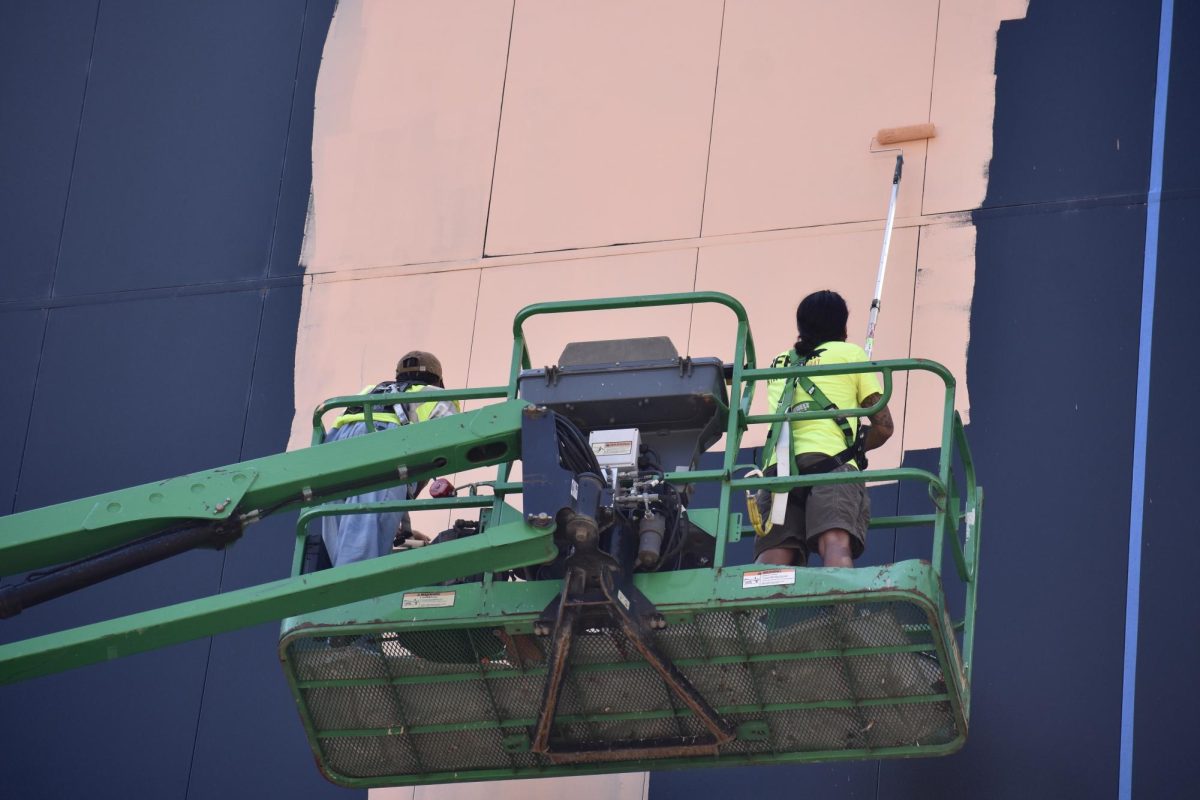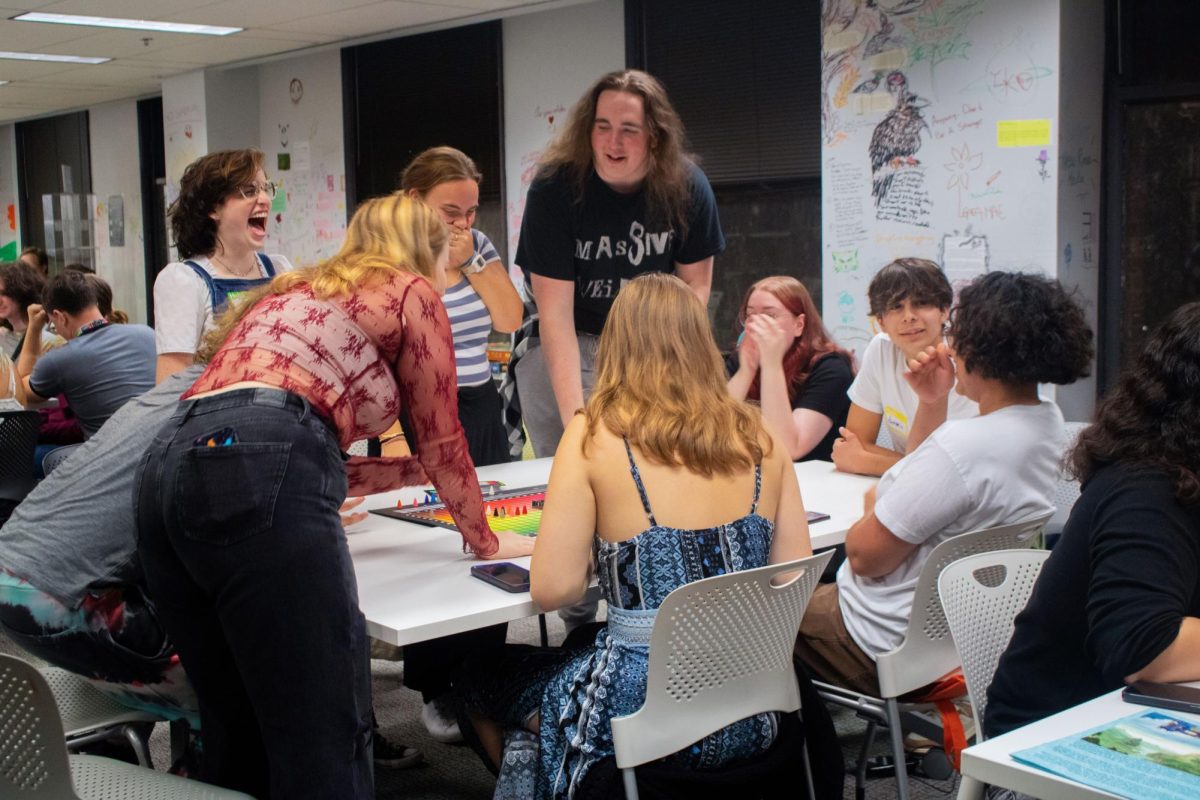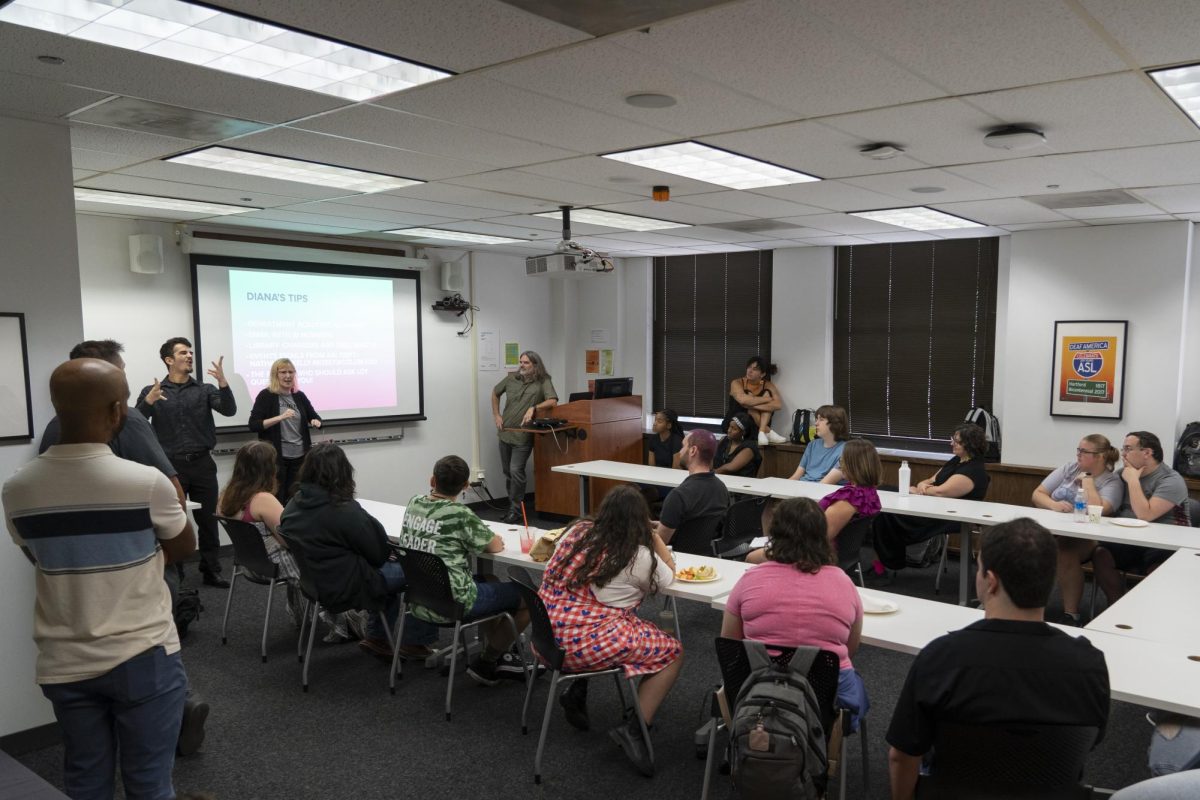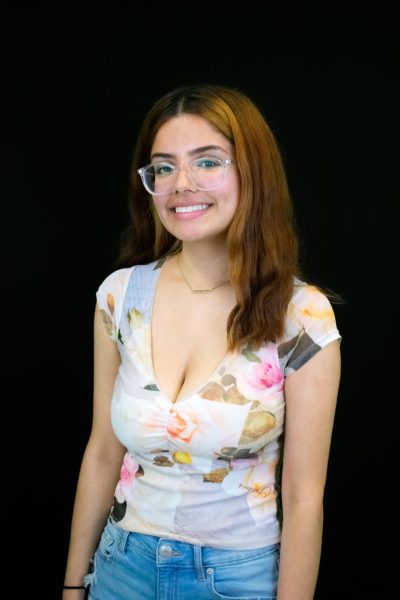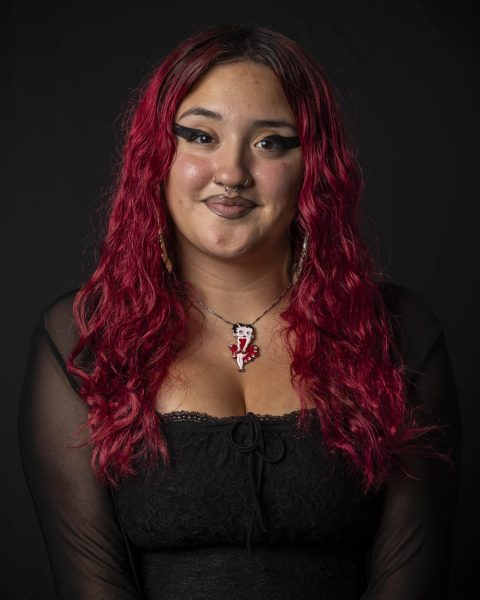New and returning students in the fall will see colorful additions around campus, including a 11,368-square-foot painted mural on the side of the Student Center.
The Student Center and the 916 S. Wabash Ave., 623 S. Wabash Ave. buildings will each include new murals painted by a team of Columbia faculty, students and recent alumni.
The Student Center will feature an outdoor “Curious Bunny,” which has been in production since Monday, July 15.
Additionally, the 916 S. Wabash Ave. building will include various alligators, while the 623 building includes eight completed individual indoor murals.
These new murals are a part of the Wabash Arts Corridor Mural Painters Project, an ongoing collaboration between the college and Behr Paint, The Home Depot, the Back of the Yards Neighborhood Council and One Summer Chicago, an organization that offers employment and internship opportunities to those ages 14 through 24.
Behr Paint, The Home Depot and the Back of the Yards Neighborhood Council have collectively donated 135 gallons of paint to the project.
Project leaders who oversee the process include Ellen Shapiro, a part-time instructor in the Business and Entrepreneurship Department, and Kari Sommers, associate dean of Student Life.
Lead muralists are Columbia faculty Cheri Lee Charlton and Cecilia Beaven who guide 15 students and alumni, including 12 artists and three members of the marketing team from Behr Paint Company in the creation of the outdoor murals. Charlton is an assistant professor in illustration while Beaven is an assistant professor in design.
While the funding is important, Shapiro said the benefits of this collaboration are proof of the basic supply chain concepts she teaches at Columbia and affects everyone involved.
“If you think about everybody’s interests and what everybody wants,” Shapiro said. “If you address them and you meet people where they are, you can put them together and you get things resulting like this.”
In similar regards, Sommers said these murals will leave a lasting positive impression.
“At this time of radical change at Columbia College Chicago, I think this project, both the internal student murals and the massive external murals, really send a sense of hope and future forward thinking,” Sommers said.
What is the Wabash Arts Corridor Mural Painters Project?
The Wabash Arts Corridor Mural Painters Project was years in the making, “a result of about 12 years of my work,” Shapiro said. The project is a collaboration between multiple of her organization and business connections.
Her connection with the Back of the Yards started when she was supporting outreach efforts with the Chicago Police Department in three different districts. Their work included many projects over the years, such as field trips and supplies donations.
“Over about six years we were supportive of their outreach to about 36,000 youth,” Shapiro said.
Since then, she has worked to create career opportunities for her students and “realized that it’s not about marketing and promoting the arts,” Shapiro said. “It’s about fusing and working at the intersection of business strategy and creative arts.”
During the previous years, she also collaborated with Illinois Institute of Technology, and their DevUp Scholars Program, a three-year program that connects Dunbar Vocational Career Academy students to STEM and entrepreneurship opportunities. Four students from Dunbar are also aiding in the outdoor mural making processes.
When she reached out to Dominic Cosentino, the regional pro sales manager for Behr Paint from The Home Depot, they connected over teaching at Dunbar.
Cosentino, alongside other members from Behr Paint, were present on July 15 and will continue to play a role throughout the mural process. Behr Paint and The Home Depot also donated equipment such as paint rollers and Wooster brushes, along with another 100 gallons of paint to IIT.
“It’s been awesome out here with some great people from Columbia, working on a project that’s going to be around for years to come that we all get to drive by and admire in the community,” Cosentino said.
Shapiro also worked with One Summer Chicago “for quite a very long time.” One Summer Chicago was able to help fund the project and pay Columbia students and alumni’s work for six weeks.
“Typically, [One Summer Chicago] is geared toward high school students and so we’re one of the fewer college projects, but we’re so excited to be a part of it,” said Sommers.
Sommers stepped in as a project leader after Meg Duguid, former executive director of the department of Exhibitions, Performance and Spaces at Columbia, was laid off.
Why the ‘Curious Bunny’?
As the lead muralist for the 11,368-square-foot mural at the Student Center, Charlton was an important contributor to the preparation process.
Duncan MacKenzie, incoming director of the School of Visual Arts, invited Charlton to sit in on the meetings to give any advice, she said. “I was first invited just because I was one of the few faculty that did murals,” Charlton said.”
She was able to provide suggestions for students, feedback on the initial project ideas and help develop a timeline for creating the outdoor murals. The 12 student and alumni muralists were selected by Charlton and other faculty members based on previous works, real world experience with murals and summer availability, Charlton said.
In addition to the Haus murals, there was enough sponsored paint and funds to allow Charlton to create a mural on campus as well, she said.
Charlton’s mural includes a blue and white bunny alongside green thorns and multicolored flowers. She said the image is a positive metaphor for student’s curiosity within education and aimed to create “something that was uplifting.”
“But if you look at the design closely, you’ll notice that there’s a rabbit moving through thorn bushes,” Charlton said. “Curiosity is about what’s next, what’s on the other side of the thorn bushes, but they still have to get through the challenges of that.”
Sommers explained that the Student Center’s external black wall was originally meant for a banner installation, but this opportunity was “bigger,” she said.
“We have to do some measuring but I’m pretty confident it’s going to be our largest [mural],” Sommers said.
As the painting of the mural at the Student Center continues, the team will use a doodle grid system to break down the large-scale canvas to smaller sections with Behr Paint.
Charlton said the mural benefits everyone involved. “So it is a smart move, I think on everyone’s end to find a collaboration like this because it will spotlight [Behr Paint] as a tool for artists,” Charlton said. “For us, it’s amazing because we get paint and we get the sort of support from their company and the companies are helping provide paid opportunities for our students.”
Ultimately, Charlton aims for the bunny to spread positivity. “I hope someone passes it by on the train or walking by and it brings them a little bit of joy.”
What murals are at 623?
The creation of the eight smaller scale indoor murals at the 623 S. Wabash Ave building started on June 26 and were completed this week by the same group of Columbia students and alumni.
Each muralist had one week to create the image and submit it to the One Summer Chicago Board for approval. During the second week, after making any required adjustments, the mural team had to plan, prepare and measure. The last week was reserved for painting and executing their ideas.
“They had a color palette of 15 colors. We asked them to express themselves in their style. They could work in teams or they could work solo,” Sommers said.
Sommers also added that the Haus space provided a collaborative setting for students. “It’s nice when students are working together in a team environment and support each other, give feedback, all of that,” Sommers said. “Plus [the walls] needed a facelift really badly.”
During the three-week long process, Columbia students and alumni have worked 20 hours per week and were compensated $17.80 per hour, Shapiro said.
Students will continue to be paid during the processes of the outdoor murals, which include priming and painting.
Ziccy Delamarter, who majored in illustration and graduated in 2024, said they felt that the opportunity was “a complete chance.” After freshly painting their signature next to their Haus mural of orange, pink and purple hues, they were still deciding on a name.
“I’m thinking graffiti guts is what I’m gonna title it,” Delamarter said, as guts is a recurring symbol in their work and reminds them of their mother.
Another recent illustration alumnus, Em Guczal, who graduated in May 2024, shared his gratitude for the opportunity to work on the Student Center mural.
“I’ve never been part of something like this before and I am very thankful that we could be provided these materials and everything,” Guczal said. “This is one of the biggest projects that I’ve worked on, so it’s pretty exciting.”
Angela Kalish, a junior graphic design major, shared similar sentiments.
“I mean, there would be no project without the supplies. So Behr Paint donating all the materials and offering their time to help is really, really important,” Kalish said.
The collaboration also allowed students to form new mural techniques and gain valuable real world experience.
“We have to be able to work with really tight deadlines because when we found out we were doing solo murals, after one week they need your design. Then the next week you are already painting, so it was a very fast turnaround,” Chenya O’Hara, a senior illustration major said.
What’s Next?
Through this collaboration process, Shapiro said that she has taken joy in connecting students to opportunities for their work.
“My big goal is I want more and more young people to see a clear path of how to have a future,” Shapiro said.
Shapiro also shared that her supervisor is currently reviewing her proposal to carry this strategic collaboration with One Summer Chicago forward.
“We’re working together to do some planning through the school year now and toward 2025,” Shapiro said. “We will do it again.”
The mural at the Student Center is scheduled for completion on July 29. The last mural, located at 916 S. Wabash Ave., is set to be painted from Aug. 2 until Aug. 5. The dedication is arranged to be held on Sept. 5 during the first week of the fall semester.
Copy edited by Doreen Abril Albuerne-Rodriguez


